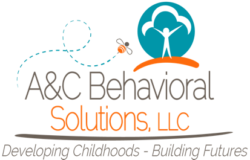Services & Treatment
What is Applied Behavioral Analysis?
Autism Spectrum Disorder & Applied Behavior Analysis Treatment
- How we learn new information or behaviors
- What motivates us to keep doing the things we do and remember various information
- Learning to predict what our choices will be in the future
- Environmental and medical factors when evaluating all types of behavior
- Treatment for individuals of all ages, level of cognitive and social functioning, and diagnoses (if any)
Misconceptions about Applied Behavior Analysis?
- Children acquire new skills only through being given unnatural rewards such as M & Ms, candy, and other food items.
- Children who participate in ABA programs become robotic in their language, social interactions, and learning style.
- ABA programs use aversive tactics or punishment to promote learning.
- All learning is done at a table where the same question is asked repeatedly.
- My child’s behaviors and difficulties in acquiring new skills are the result of a medical diagnosis. A program based on “psychology” will not help him or her.
What is Applied Behavior Analysis?
Natural Environment Training “NET”
- Environment is already part of the child’s everyday life, but may be contrived or altered to facilitate teaching.
- Reinforcers used are based on the child’s current motivation.
- Reinforcers used are often naturally occurring within the environment.
- The therapist is paired with delivery of reinforcers and has control of reinforcer delivery.
- Naturally occurring events are often taught.
- Generalization and maintenance are crucial components of intervention.
- Mand training (learning to request) often occurs in this context.
Incidental Teaching
- Location of treatment is already part of the child’s everyday life.
- Teaching activities are naturally occurring without emphasis on contriving the environment to input teaching.
- Reinforcers used are based on the child’s current motivation.
- Reinforcers used are naturally occurring within the environment.
- The therapist withholds reinforcer delivery to evoke responses.
- Naturally occurring events are often taught.
- Functional language use, taught within behavioral strategies, is emphasized.
- Functional language use may not be based in Skinner’s analysis of verbal behavior.
*Sundberg & Partington
Verbal Behavior Therapy
- Uses the “discrete trial” and natural environment teaching formats. There is an equal emphasis on utilizing both treatment strategies. Incidental teaching is also used.
- Reinforcers used are based on the child’s current motivation and may change repeatedly throughout the session.
Discrete Trial Training
- A “discrete trial” is defined as “the opportunity for the response, the response, and the outcome for the response.”
- Broken down into behavioral language, this is the SD, Antecedent, Behavior, Consequence format that will be used throughout this presentation.
- It is the mechanism for which we arrange opportunities for learning and should be used in all teaching environments.
- This instructional model is used within a variety of approaches, though many claim not to use it. Instead they discuss the use of an ABC format.
- It is often deemed the equivalent of the Lovaas approach, as he coined the terminology, though they are different.
*Malott, Malott, and Trojan, 2000; www.youtube.com*
Other Services Provided
- Counseling and Mental Health Services
- Behavior management
- Center start up support
- IEP Advocacy
- BCBA Supervision
